Andrew Zimmerman (@andrew.zimmerman.photography) is equal parts aquatic biologist and underwater photographer. “My work in both realms focuses on the freshwater biodiversity of the Southeastern United States,” he explains. “As a biologist, I work for Conservation Fisheries Inc. We are the only non-game fish hatchery in the nation working with over 80 species since incorporation in 1986. Our staff and partners work to prevent the extinction of rare, threatened and endangered species of freshwater fishes.”
Product Preview – In This Article You'll Find:
–Sony Alpha 7R IV
–Sony 90mm f/2.8 Macro G
As an underwater photographer, Zimmerman’s work aims to shed light on these little-known species and the rivers they rely on. This translates to a lot of time snorkeling in pristine streams, learning details about his subjects that allow him to more intimately capture them in images. During a recent trip to Great Smoky Mountains National Park, he was equipped with his Sony Alpha 7R IV and Sony 90mm f/2.8 Macro G lens to photograph one of these species – the Southern Appalachian Brook Trout. “Brook Trout are one of the last fish I photograph each year. Getting to hike up to these beautiful places to photograph beautiful fish always feels like the cherry on top of my year,” he says.
We caught up with him to learn more about the images he captured and how he did it – keep reading as he shares the story in his own words.
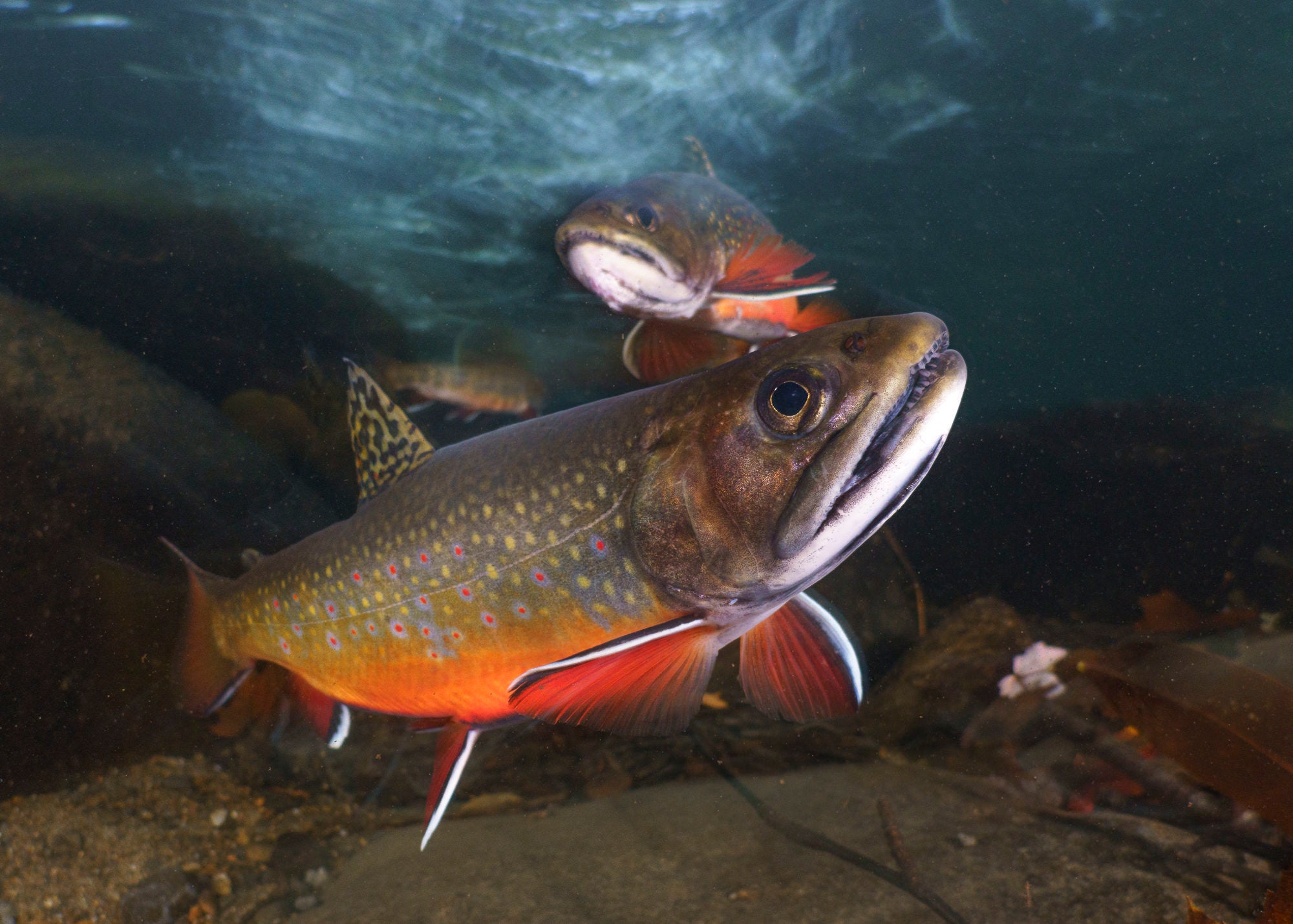
Photo by Andrew Zimmerman. Sony Alpha 7R IV. Sony 90mm f/2.8 Macro G.
A Symbol Of Appalachian Wilderness
Southern Appalachian Brook Trout are a symbol of Appalachian wilderness. This fall I sought out to photograph these fish in Great Smoky Mountain National Park where I knew there were pure southern strain fish.
This subspecies of the Brook Trout is restricted to high elevation streams of the southern mountain range. They require spring-fed streams that are kept cool during the summer heat from groundwater and forested watershed. They are a rare species due to habitat loss, mixing of genes with stocked northern strain, and competition from stock non-native trout. These fish really shine in the fall. Their colors brighten like the leaves in the surrounding forest, making them a beautiful subject in an equally beautiful environment.
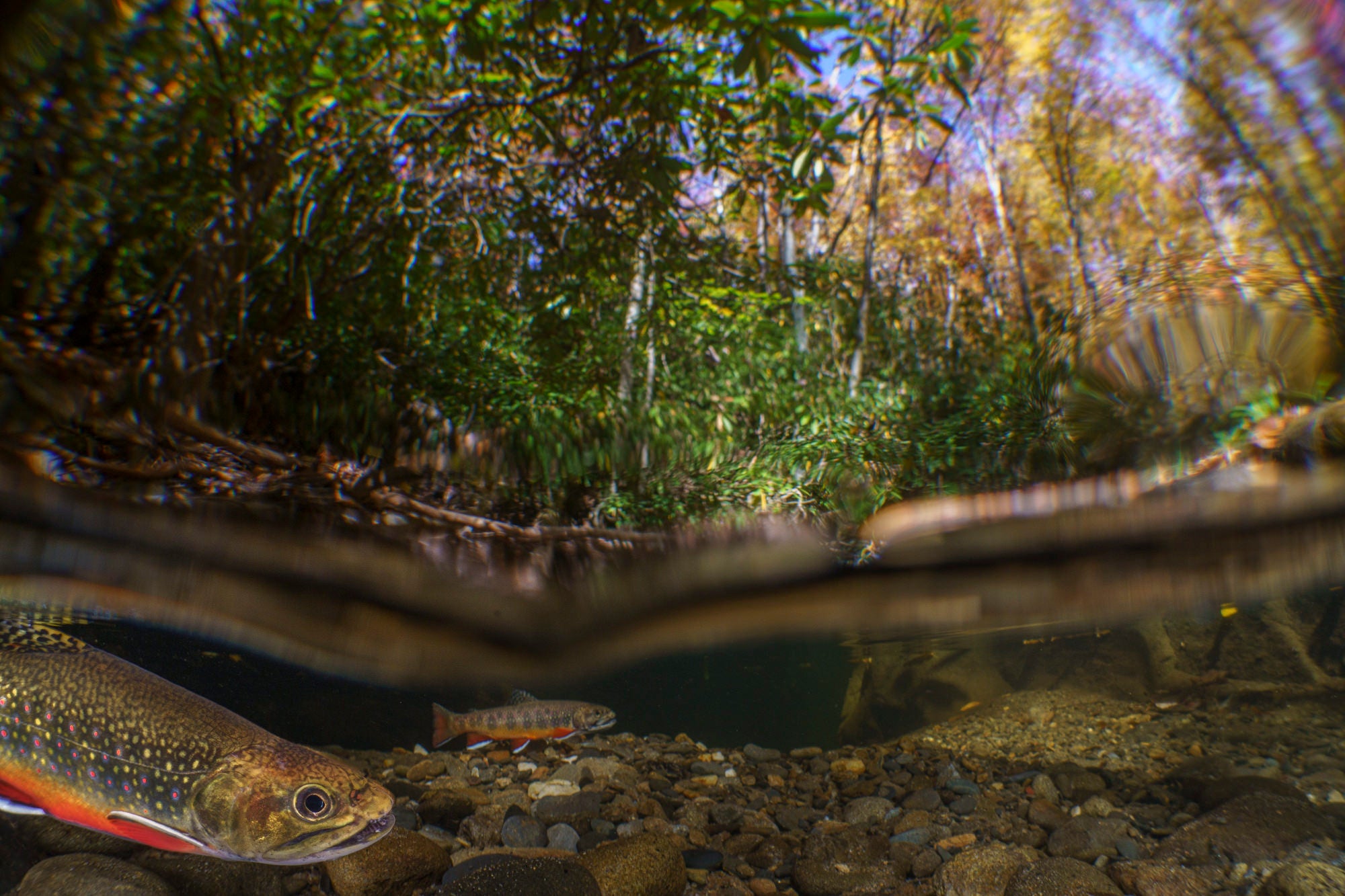
Photo by Andrew Zimmerman. Sony Alpha 7R IV. Sony 90mm f/2.8 Macro G.
An Underwater Setup For Wide-Angle Close-Ups
For this shoot I packed my Sony Alpha 7R IV and camera-specific Nauticam underwater housing. My rig is equipped with a Small HD 502 monitor in a Nauticam housing. The monitor is a game changer for image composition when compared to the cameras LCD and viewfinder.
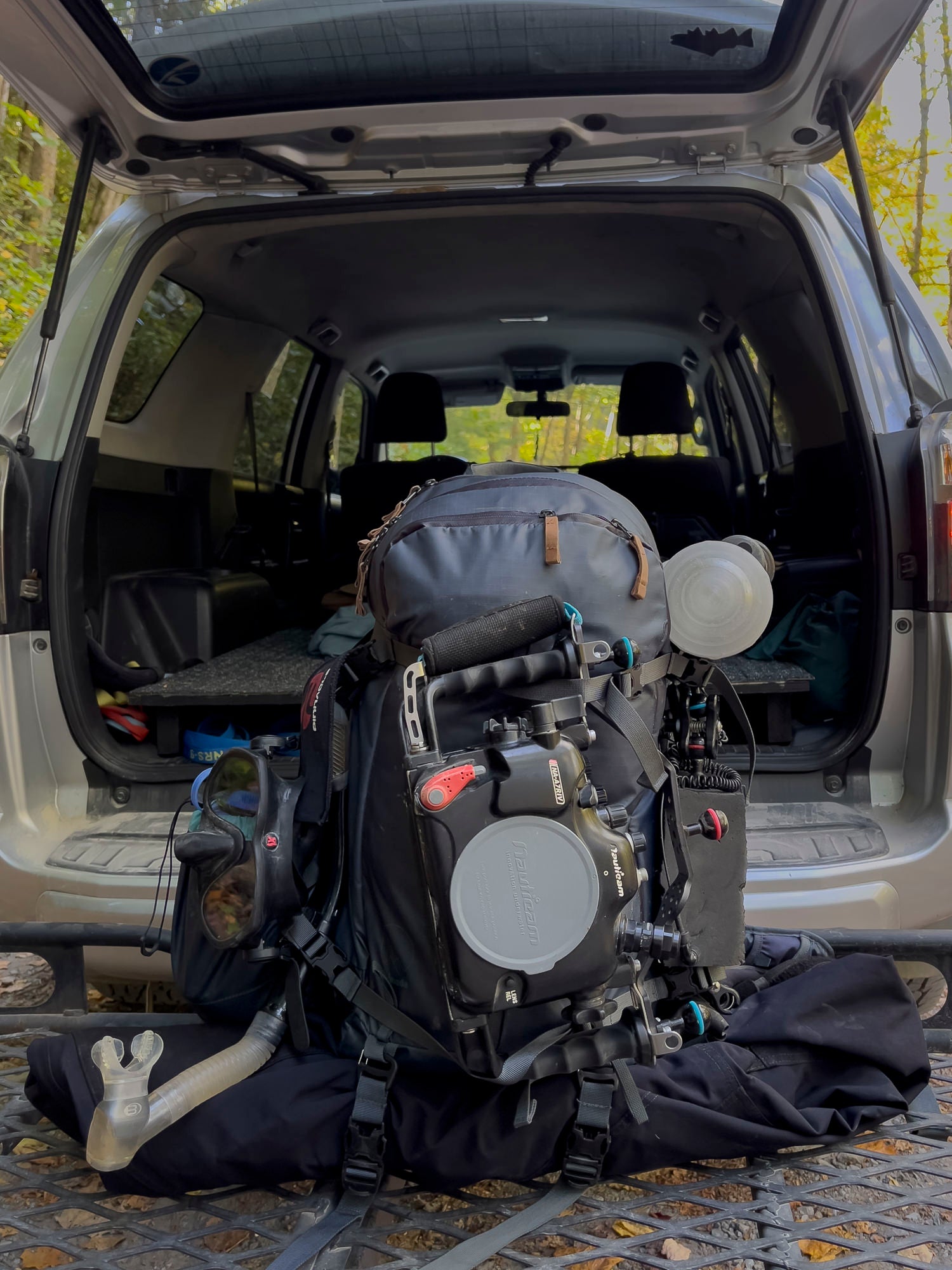
For lighting I have two Inon z-240 strobes. I like to use these to provide fill light for the foreground that balances with ambient background light. I always shoot with my strobes in manual and adjust the power and position depending on what lens I am using, the ambient light, water clarity, and distance from my lens to the subject.
As for lenses, I added my Sony 90mm f/2.8 Macro G which I would pair with a Nauticam probe-style Extended Macro Wide Lens (EMWL) with 130 degree objective. This specialized lens is designed by Nauticam to be paired with the Sony 90mm. The wet lens can be attached to the housing underwater to convert the 90mm macro lens to a 130 degree semi-fisheye. As an underwater photographer this allows me to shoot macro or wide angle without ever getting out of the water. The probe style lens is long with a small element which allows me to get really close to skittish fish like Brook Trout for close focus wide angle shots.
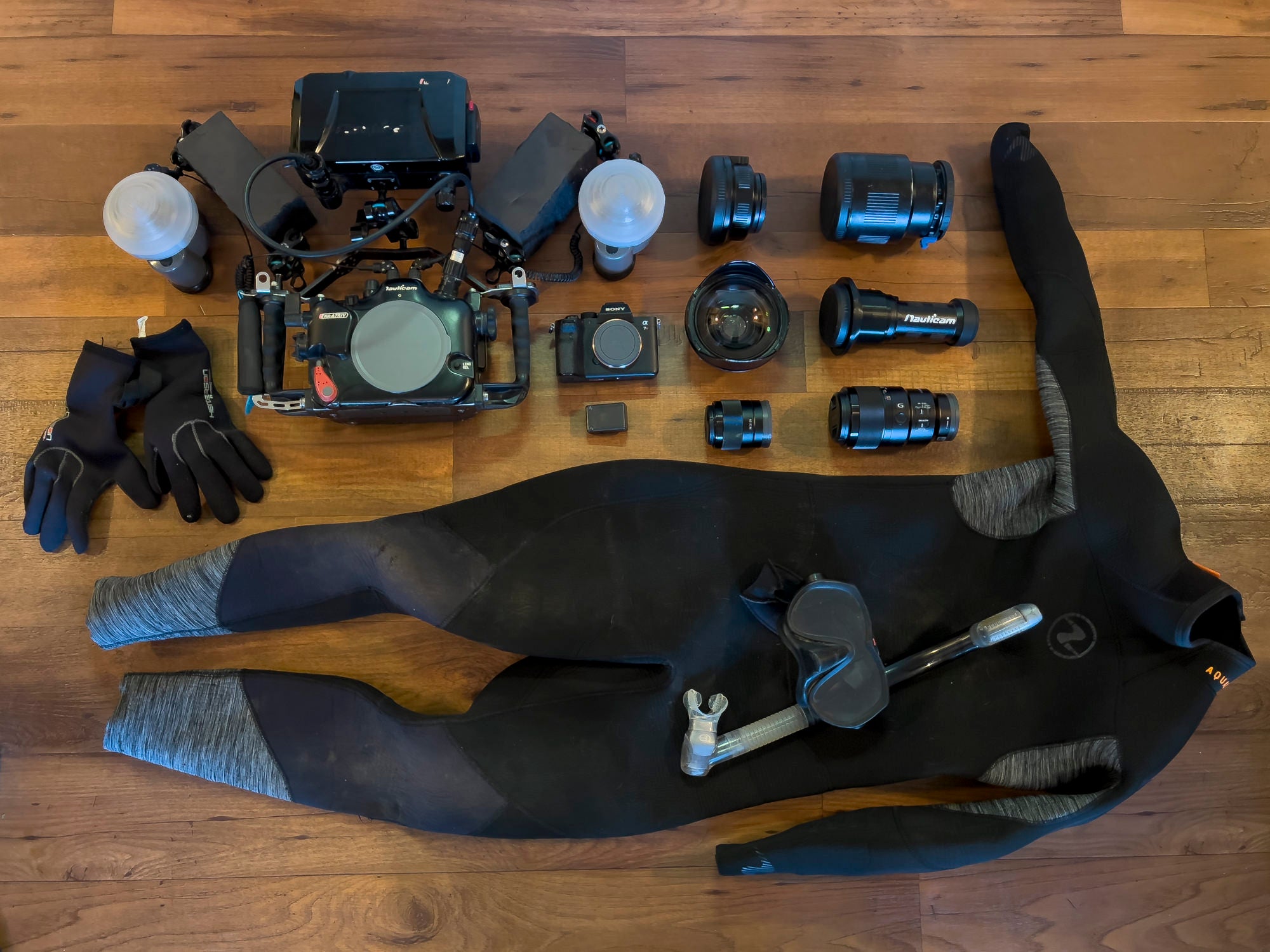
Learn more about Zimmerman’s complete kit in What's In My Bag: An Underwater River Photography Kit To Capture Hidden Gems.
Wildlife Photography = Patience + Persistence
To get this camera in front of these Brook Trout, I was going to have to work for it. I needed to hike two to three miles with a backpack bursting with camera gear, underwater housing, strobes, wading boots, drysuit and warm undergarments to combat hours of laying still in cold mountain water.
The first day, I pulled my vehicle into the trailhead parking area, stuffed my backpack with gear, and huffed up a stream-side trail. Vibrant colored leaves billowed down from trees onto the ravine floor. The stream, a series of plunge pools, flows through car sized boulders and bedrock painted with moss and lichen. After a 3 mile hike up the trail, I reached a spot I had visited in years past. After preparing my camera and housing, I donned my heavy undergarments, sealed myself in my drysuit, grabbed my camera, and slipped into the stream.
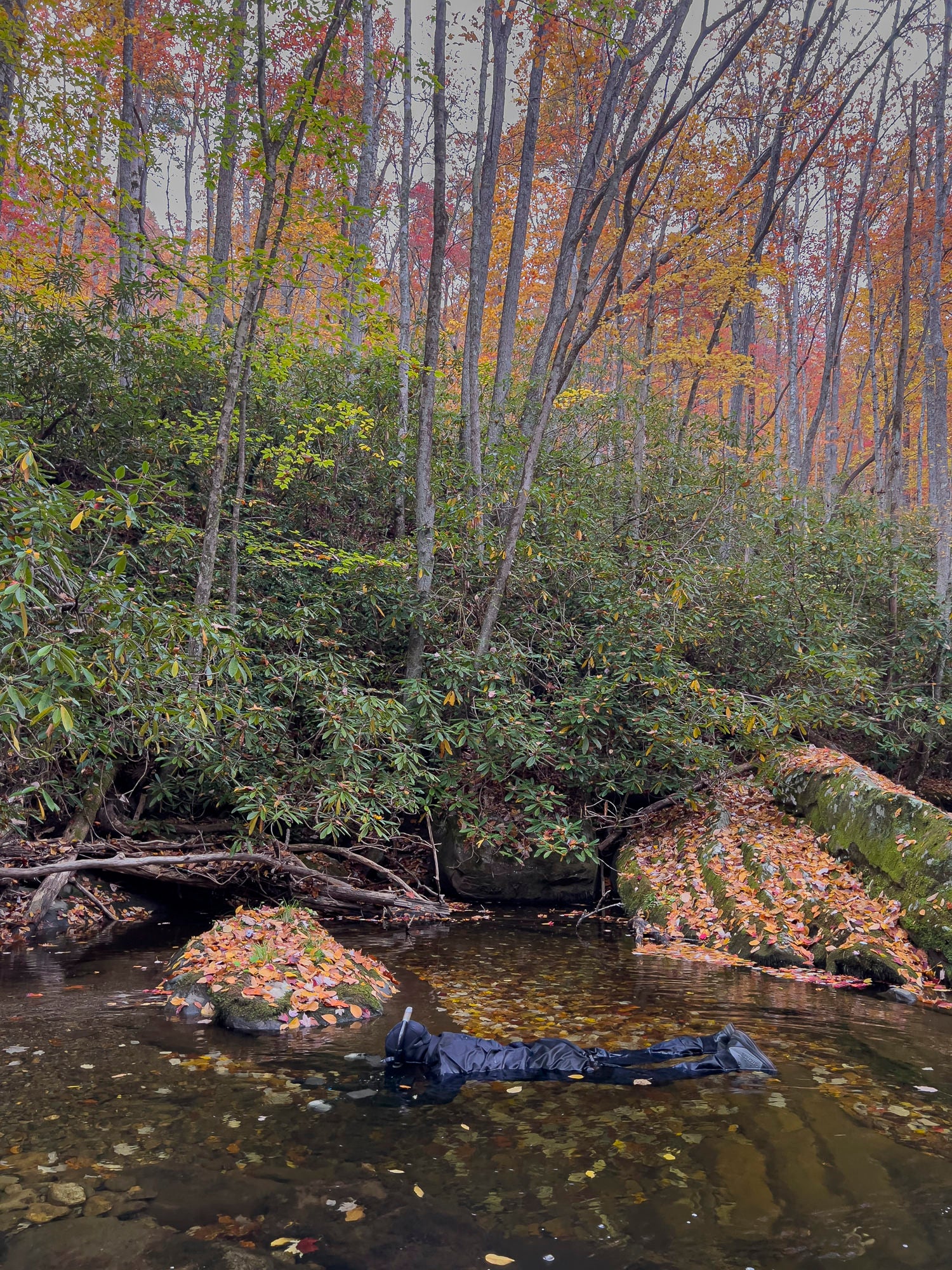
Photographer Andrew Zimmerman
No longer shrouded by the glare on the surface of the water, Brook Brout of all different sizes were revealed. Larger males were highly aggressive, holding tight to females and fending off any other male competition, a sure sign they would be spawning soon.
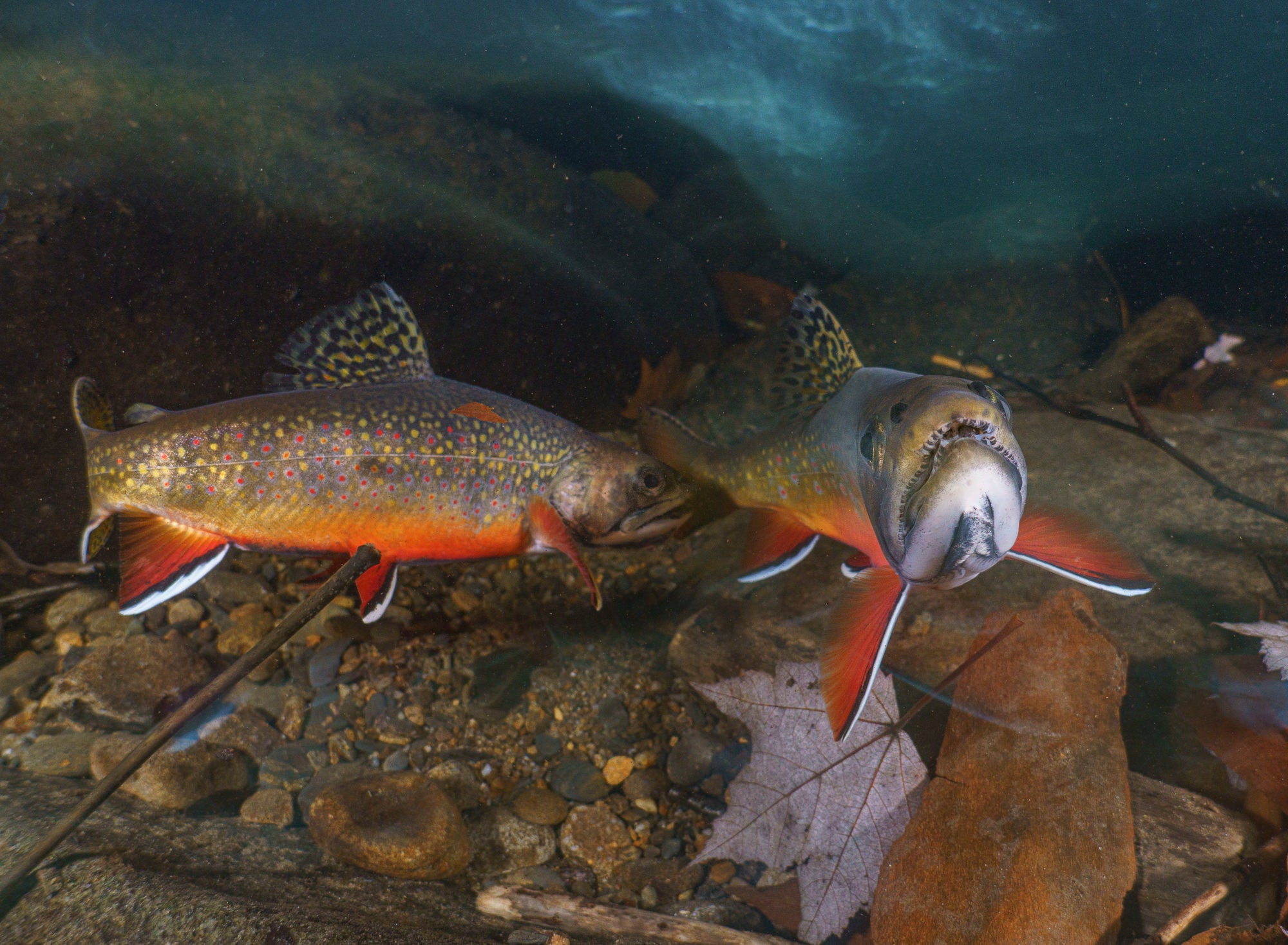
Photo by Andrew Zimmerman. Sony Alpha 7R IV. Sony 90mm f/2.8 Macro G.
At the end of my third day, as the light was fading and I had already told myself a handful of times, “five more minutes,” two large males broke out into a fight over a female. For just a minute or two they battled in front of my lens, preoccupied with each other I could get close.
In the low light I was able to slow down my shutter speed (1/4 sec.) to maintain a small aperture (f/8) for a deep depth of field and freeze the foreground of the images with my strobes (ISO 1250). As fast as it started, it ended, I called it a day, and hiked out. I continued to hike up for four more days and photographed spawning pairs on subsequent days but the fight stood as my favorite moment.
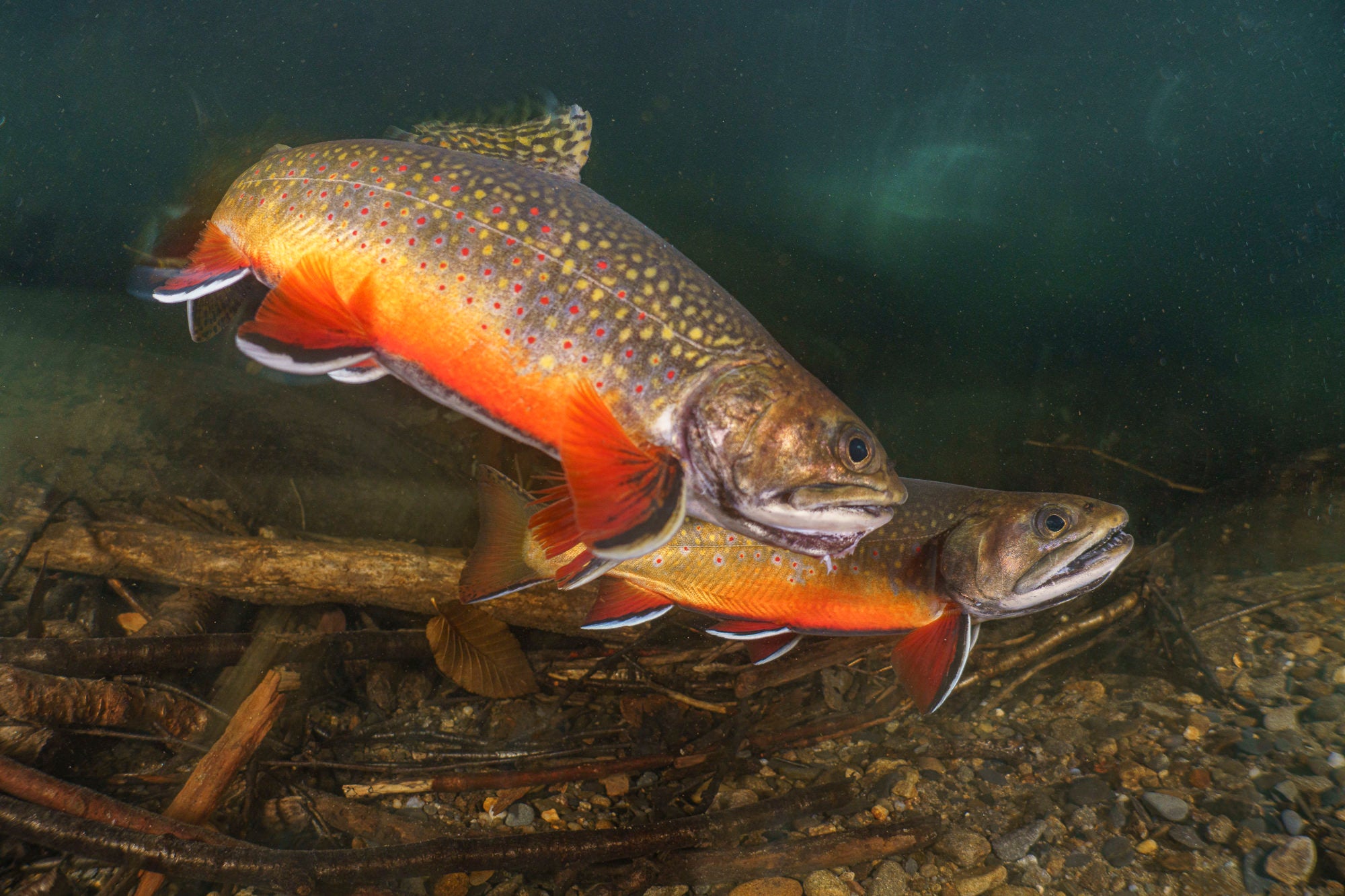
Photo by Andrew Zimmerman. Sony Alpha 7R IV. Sony 90mm f/2.8 Macro G.
The Edit
After seven days of shooting, spawning activity seemed to dwindle and it was time to work up the images. I popped my SD card into my iMac and imported the images into Lightroom Classic. I prefer Classic to the cloud-based counterpart because I get to work with the full-sized images. This helps me confirm sharpness and make fine detail edits.
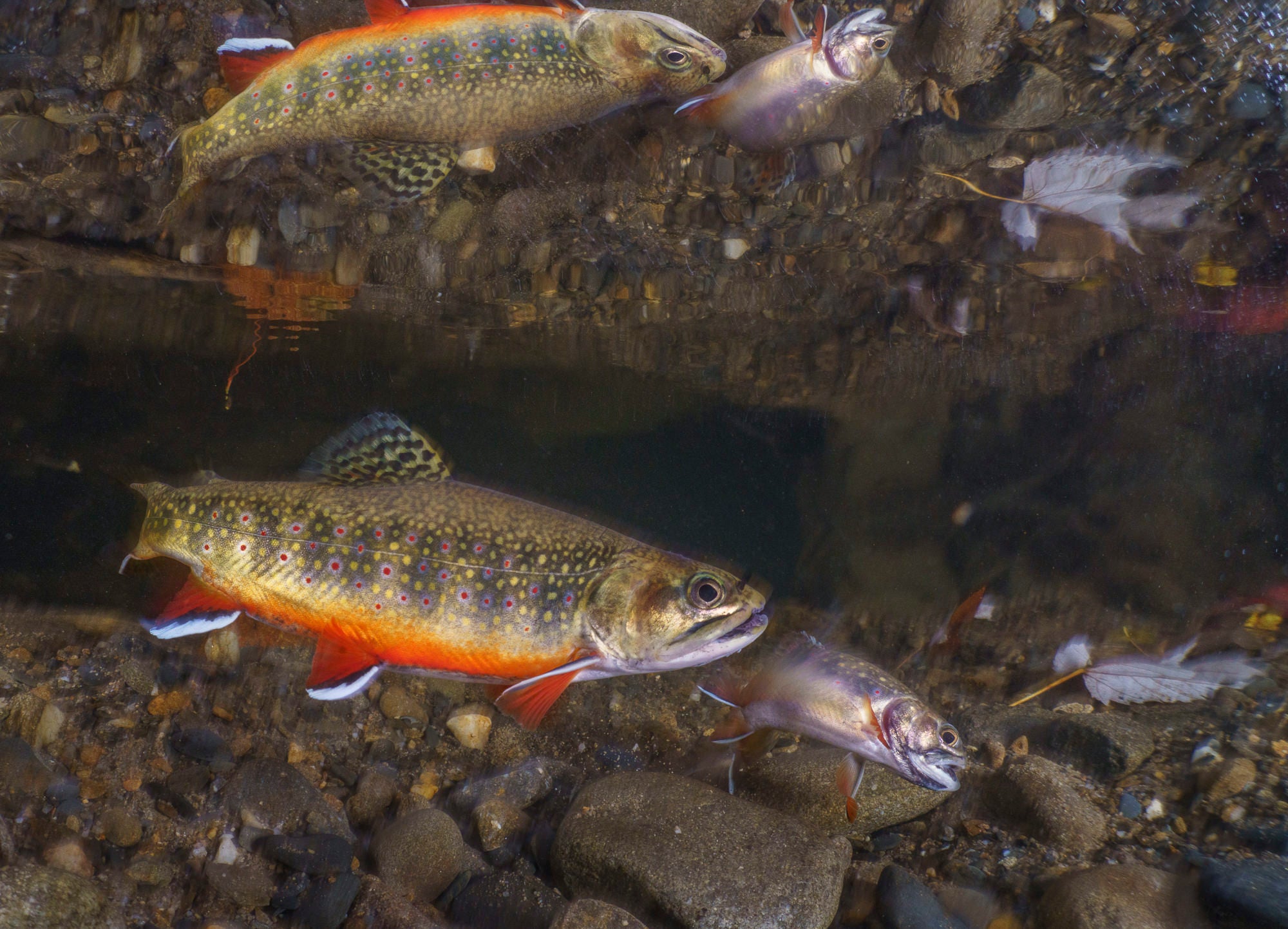
Photo by Andrew Zimmerman. Sony Alpha 7R IV. Sony 90mm f/2.8 Macro G.
Generally, my edits involve color correction, minor global tone adjustments, and sharpness. I then use an assortment of layer masks to work on local adjustments to enhance or diminish specific aspects of each image. I usually like to add some local texture and clarity to my subject. To remove some of the noise from images that were taken at higher ISO, like the fight images, I use Lightroom's AI Denoise tool. It does a really nice job of removing hot pixels while maintaining sharpness. If more local edits are required, I will edit the file in Photoshop, however this is out of the norm.
See more of Andrew Zimmerman’s work on Instagram @andrew.zimmerman.photography.

















